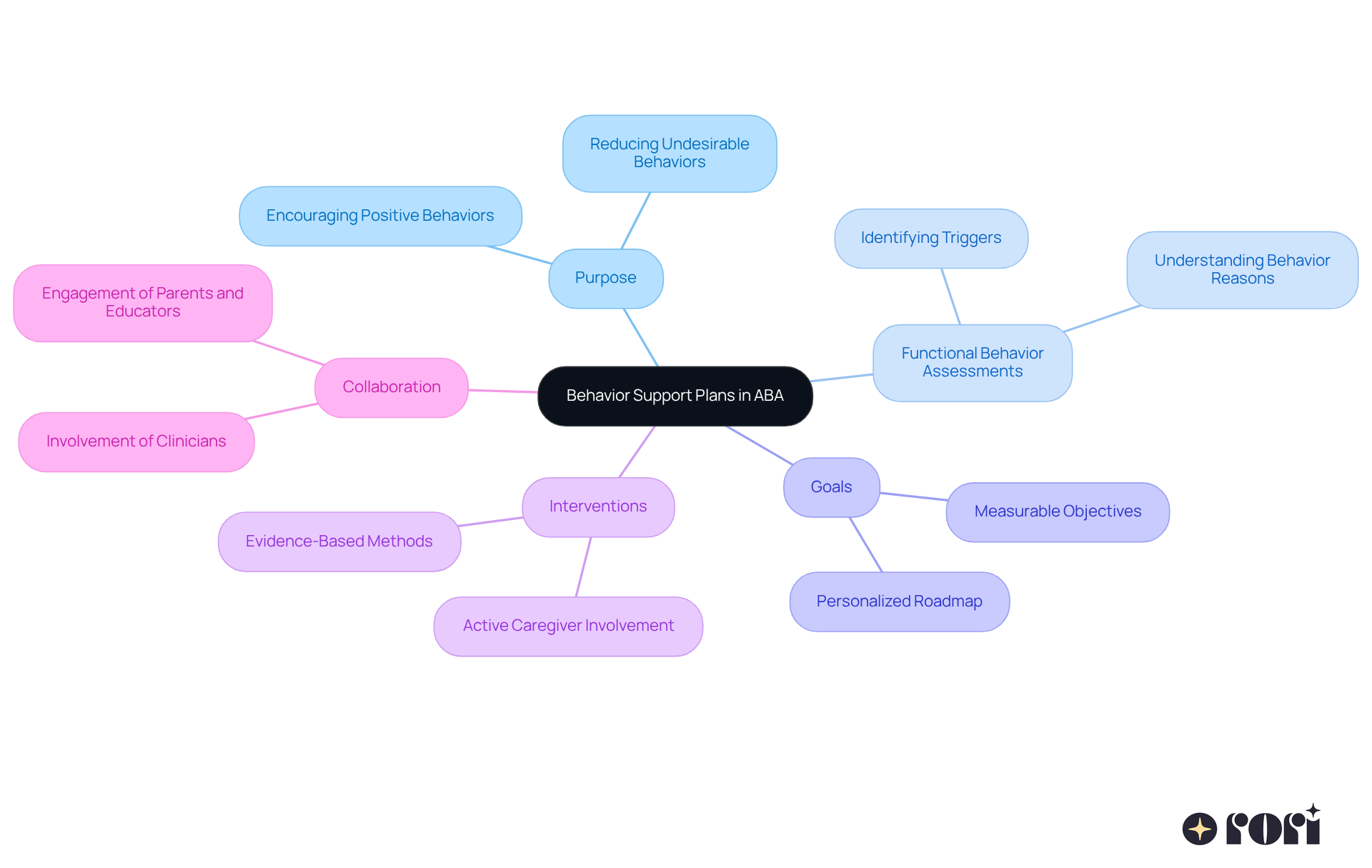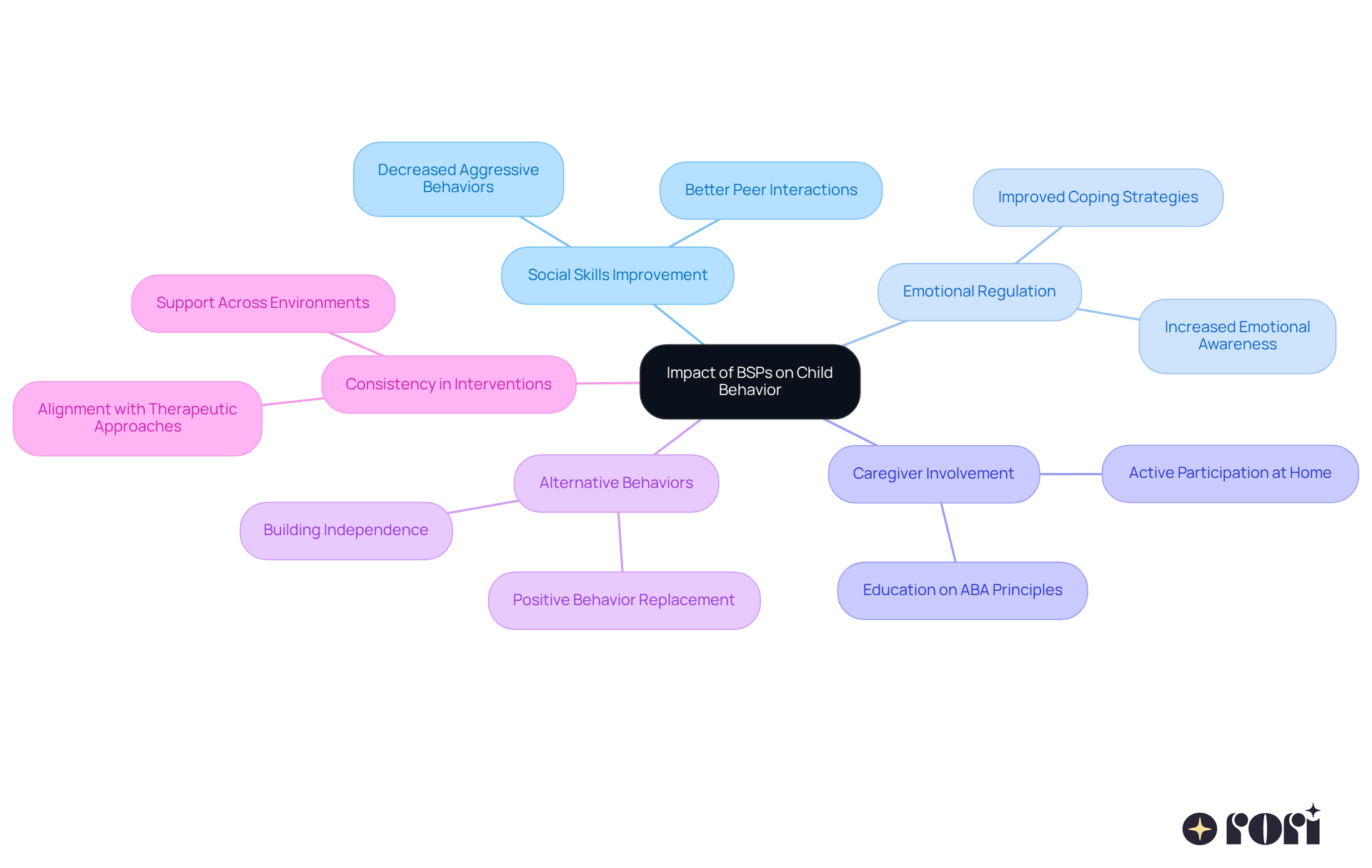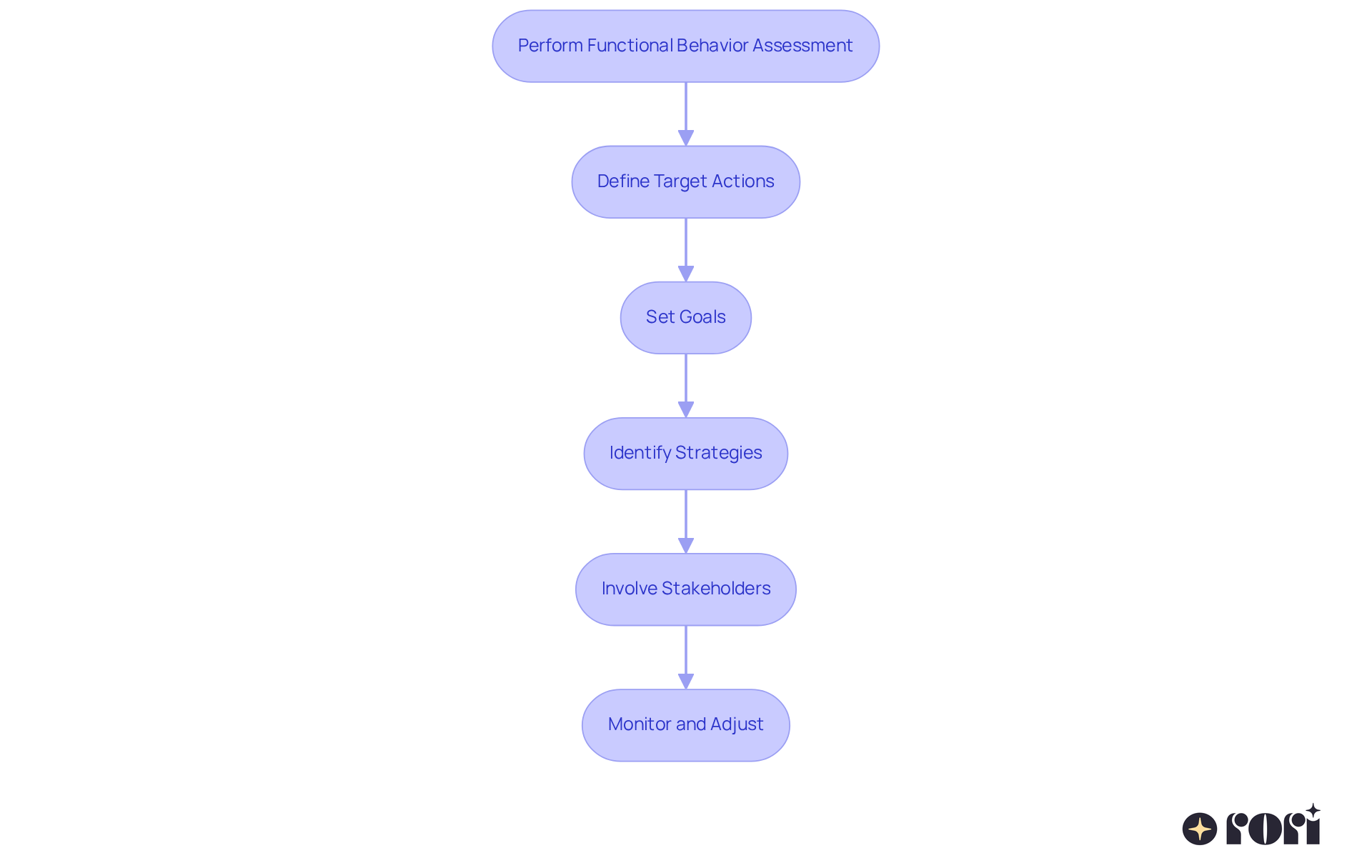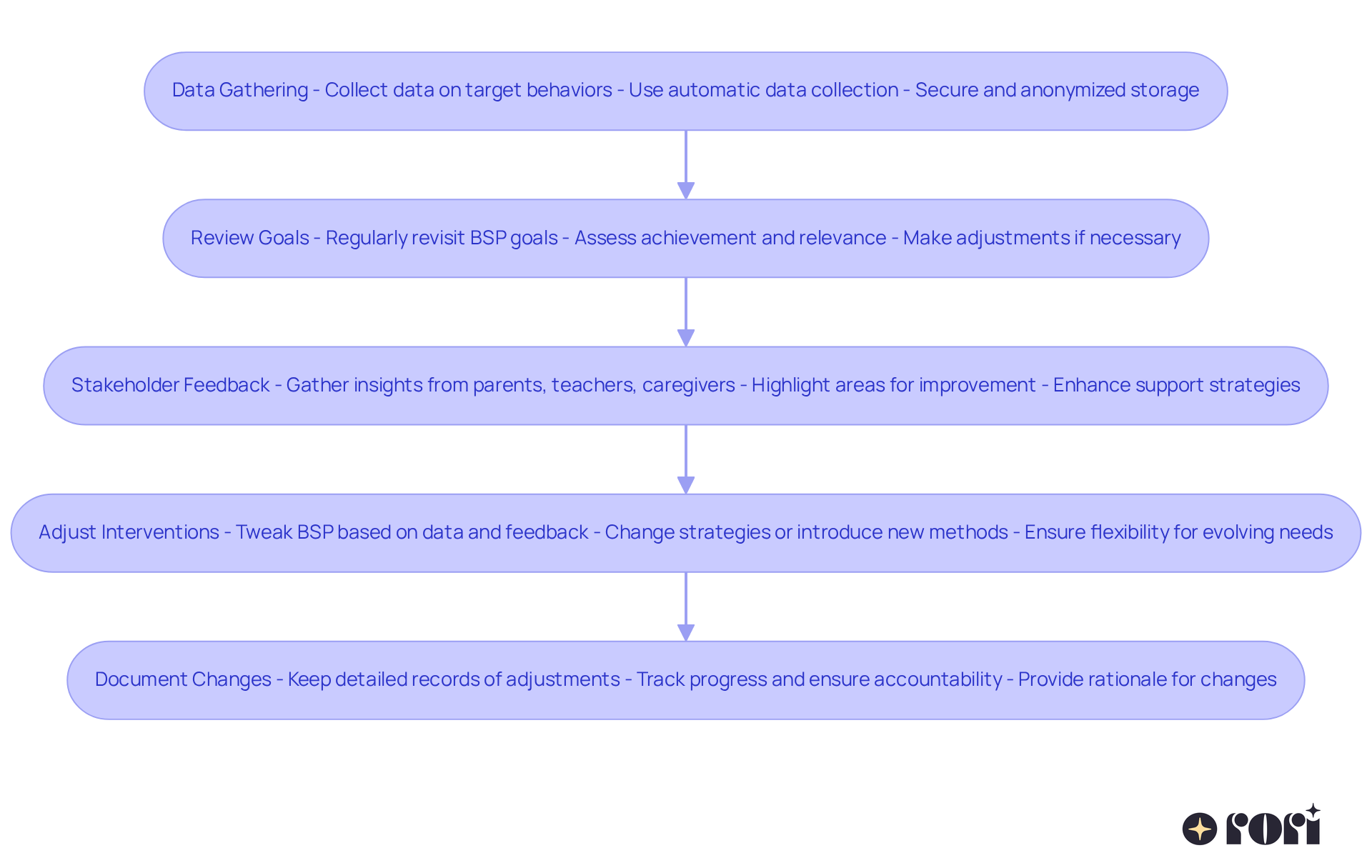This article dives into how we can enhance child behavior through Behavior Support Plans (BSP) in Applied Behavior Analysis (ABA). It highlights the importance of personalized strategies, which are based on thorough assessments and the collaborative involvement of caregivers. Ongoing evaluation is key to effectively addressing challenging behaviors and promoting positive outcomes for children with autism.
Let’s explore this together! By understanding the unique needs of each child, we can create a supportive environment that truly makes a difference. With the right strategies in place, we can work together to help your child thrive. Remember, you’re not alone on this journey—support is just around the corner!
Creating a positive behavioral environment for children with autism is a journey, and a lot depends on how effective Behavior Support Plans (BSP) are in Applied Behavior Analysis (ABA). These personalized strategies not only aim to modify challenging behaviors but also empower caregivers and educators to foster lasting improvements in children's lives. But let’s face it, the road to mastering BSPs can feel overwhelming at times. So, how can caregivers effectively implement these plans to ensure meaningful behavioral change?
In this article, we’ll dive into the essential steps and best practices for developing and evaluating BSPs. We’re here to help you every step of the way, offering valuable insights for those committed to enhancing child behavior. Let’s explore this together!
Support Plans, or BSP in ABA, are organized strategies used in Applied Behavior Analysis to help change challenging behaviors in children with autism. Think of a BSP as a personalized roadmap—it outlines specific interventions designed just for your child's unique needs. The focus is on encouraging positive behaviors while reducing those that are less desirable.
These plans come from thorough evaluations, including Functional Behavior Assessments (FBAs). These assessments help identify what triggers certain behaviors and why they happen. At Rori Care, our conduct care engine performs functional behavior analysis for targeted actions and skills, which means we can generate automatic progress reports for clinicians to review.
By clearly outlining the behaviors to address and the goals we want to achieve, the BSP in ABA serves as a helpful guide for clinicians, parents, and educators. Together, we can implement effective interventions that not only promote improvement but also enhance the overall quality of life for your child. Plus, our skilled analysts create personalized plans that include measurable objectives and evidence-based methods. This way, we can continuously assess and adjust the plans to ensure they meet your child's evolving needs.
This collaborative approach empowers caregivers with ABA principles and strategies, making it easier for you to support your child’s behavioral goals. Active involvement and data collection are key, and we’re here to help you every step of the way! Let’s explore this together and make a positive impact on your child's journey!

The execution of BSP in ABA can really make a difference in how youth behave, especially when caregivers are involved. Studies show that young people with personalized BSPs often see great improvements in their social skills, emotional regulation, and overall behavior. For instance, one study found that individuals with autism who took part in structured BSP in ABA had a significant decrease in aggressive behaviors and better interactions with their peers. Plus, the BSP in ABA helps youth learn alternative, positive behaviors to replace challenging ones, which builds their sense of independence and confidence.
Caregivers play a crucial role in this journey by complementing professional support with their involvement at home. The benefits of educating caregivers are huge! When caregivers understand ABA principles and strategies better, they can make informed choices that positively impact their children's growth. This active participation not only strengthens the support at home but also aligns with therapeutic approaches, leading to better behavioral outcomes. When parents and educators work together through BSP in ABA, it creates consistency in interventions across different environments, resulting in lasting changes in behavior. Empowered caregivers, armed with knowledge and skills, significantly contribute to their children's development, reducing stress and improving family dynamics. Let’s explore this together!

Creating an effective BSP in ABA can seem like a daunting task, but dividing it into manageable steps makes it easier! Here’s a friendly guide to help you through the process:
Perform a Functional Behavior Assessment (FBA): Start by gathering information about your child's actions. This helps you identify triggers and understand the reasons behind their behavior. Knowing these details is essential for tailoring the BSP to fit your child's unique needs. Research shows that FBAs can really boost the effectiveness of BSP in ABA by clarifying behavior patterns.
Define Target Actions: Next, it’s important to clearly specify which actions need intervention. Use specific and measurable language to outline these behaviors, ensuring that everyone involved knows what to focus on.
Set Goals: Establish specific and achievable goals for the changes you want to see. Make sure these objectives are realistic and have a timeline, so you can track progress and hold everyone accountable.
Identify Strategies: Now, let’s select some evidence-based strategies to address those target actions. This might involve teaching new behaviors, changing the environment, or using reinforcement techniques. Many successful case studies show that targeted interventions can lead to significant improvements in behavior.
Involve Stakeholders: Don’t forget to engage parents, educators, and other professionals in the process! Collaborating with others creates a supportive environment, which can really enhance the effectiveness of your BSP in ABA.
Monitor and Adjust: Finally, keep an eye on how the BSP is working through ongoing data collection and feedback. Be open to making necessary adjustments to improve outcomes for your child. Best practices remind us that regular monitoring is key to adapting strategies as needs evolve.
By following these steps, you can create a strong BSP that not only addresses behavioral challenges but also promotes positive outcomes for youth with autism. Let’s explore this together, and remember, we’re here to help you every step of the way!

Evaluating the effectiveness of Behavior Support Plans (BSP) is an ongoing journey that involves several key components:
Data Gathering: Gathering data on target behaviors is essential for tracking progress. This might include counting how often behaviors occur, measuring their duration, or making qualitative observations to give a fuller picture of your child's actions. At Rori Care, we use automatic data collection during clinical sessions, which means our clinical team is always there for your child without interruptions. All data is stored securely, anonymized, and deleted after analysis. As ABA professionals often say, "Data collection is the foundation of effective behavior analysis; it enables us to make informed choices regarding strategies."
Review Goals: It's important to regularly revisit the goals set in the BSP in ABA to evaluate how well they're being met. If goals aren't being achieved, we need to dig deeper to understand why and consider making adjustments. Ongoing assessment helps ensure that the objectives of BSP in ABA remain relevant to your child's needs.
Stakeholder feedback from parents, teachers, and caregivers is incredibly valuable in evaluating your child's behavior and the effectiveness of the BSP in ABA. Their insights can provide important context and highlight areas that might need improvement. For example, the Behavior Support Hub Membership emphasizes the role of community feedback in enhancing support strategies for autistic students.
Adjust Interventions: Based on the data collected and feedback from stakeholders, it may be necessary to tweak the BSP in ABA. This could mean changing strategies, introducing new methods, or refining what’s already in place to better fit your child's evolving needs. The flexibility of the BSP is crucial, especially considering that 90% of youngsters show notable progress when suggested hours are fully implemented with active caregiver participation.
Document Changes: Keeping detailed records of any changes made to the BSP, along with the reasons for these adjustments, is essential. This documentation not only helps track progress but also ensures accountability throughout the intervention process.
By systematically applying these components, practitioners can enhance the effectiveness of Behavior Support Plans, ultimately fostering better outcomes for children. Let’s explore this together and see how we can support your child every step of the way!

Mastering Behavior Support Plans (BSP) in Applied Behavior Analysis (ABA) is crucial for fostering positive behavior changes in children with autism. By using personalized strategies tailored to each child's unique needs, BSPs act as a roadmap for clinicians, parents, and educators. This collaborative approach not only boosts the effectiveness of interventions but also empowers caregivers to actively engage in their child's development.
Throughout this article, we highlighted key steps for developing an effective BSP. These include:
We emphasized the importance of involving stakeholders and ongoing evaluation, showing how regular feedback and data collection can significantly impact the success of the BSP. These practices help ensure that interventions stay relevant and effective, ultimately leading to improved behavioral outcomes.
In conclusion, enhancing child behavior through BSPs is a shared responsibility that calls for commitment, collaboration, and adaptability. By embracing the principles of ABA and actively participating in the process, caregivers can create a supportive environment that nurtures growth and independence. The positive effects of well-implemented BSPs not only benefit the child but also enrich family dynamics and community interactions, paving the way for a brighter future. Let’s explore this journey together, and remember, we’re here to help you every step of the way!
What is a Behavior Support Plan (BSP) in Applied Behavior Analysis (ABA)?
A Behavior Support Plan (BSP) in ABA is an organized strategy designed to change challenging behaviors in children with autism. It serves as a personalized roadmap outlining specific interventions tailored to the child's unique needs.
How are Behavior Support Plans developed?
BSPs are developed from thorough evaluations, including Functional Behavior Assessments (FBAs), which help identify triggers and reasons behind certain behaviors.
What is the role of Functional Behavior Assessments (FBAs) in creating a BSP?
FBAs play a crucial role in creating a BSP by identifying what triggers certain behaviors and providing insights into why they occur, which informs the development of targeted interventions.
How does Rori Care utilize functional behavior analysis in their BSPs?
At Rori Care, the conduct care engine performs functional behavior analysis for targeted actions and skills, allowing for the generation of automatic progress reports for clinicians to review.
Who benefits from the BSP in ABA?
The BSP benefits clinicians, parents, and educators by providing a clear guide for implementing effective interventions that promote positive behavior changes and enhance the overall quality of life for the child.
What elements are included in a personalized BSP?
A personalized BSP includes measurable objectives and evidence-based methods, allowing for ongoing assessment and adjustments to meet the child's evolving needs.
How can caregivers be involved in the BSP process?
Caregivers can be actively involved by collecting data and learning ABA principles and strategies, which helps them support their child's behavioral goals effectively.
What is the overall goal of implementing a BSP?
The overall goal of implementing a BSP is to promote improvement in behavior while enhancing the child's quality of life through collaborative efforts among caregivers and professionals.